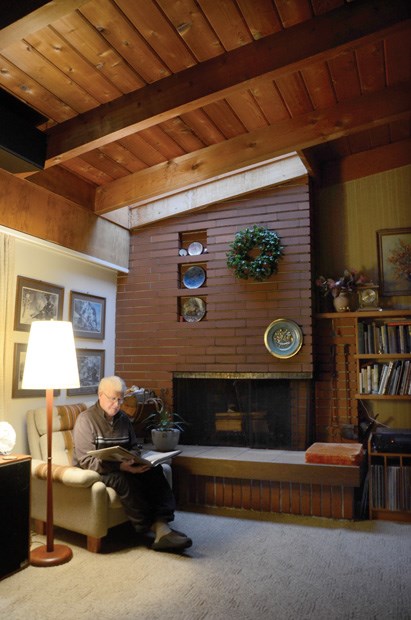The other day I was fortunate enough to meet longtime North Shore resident Bob Booth who has been living in North Vancouver since 1922.
At the age of 94, he has witnessed our communities burgeon from a spattering of small homes in the forest to one of the most expensive housing markets in Canada. Mr. Booth retired from architecture in 1984 but still maintains a keen eye to modern design and, like me, was interested in the proposed sale of the North Shore’s first truly modern home– the Binning House.
Booth designed and built his family home in Canyon Heights in the 1950s. At slightly less than 2,000 square feet the house is small compared to the current market stock but, to my mind, is the perfect size for a home. “I brought up three children in this house,” Mr. Booth would tell me, agreeing that homes these days are just far too big for what we really need. The home presents a modest façade from the street and only hints at its modernist influence with long horizontal windows to the basement. “I designed the home on an open layout,” described Booth, “and there’s lots of windows to feel bright and open.”
Booth’s design reflects the principles of modern architecture while incorporating distinctly regional elements of exposed wood and timber to create a clean, contemporary West Coast style. The home is currently on the District of North Vancouver’s heritage listing and presents an excellent example of our modern “heritage” housing stock here on the North Shore.
After the Second World War, the North Shore saw a period of rapid growth with people from Eastern Canada and abroad seeing the West Coast as a place of opportunity where the pioneering spirit could flourish and innovative ideas could thrive. The ideas and concepts of the modern movement aligned well with this adventurous spirit and it wasn’t long before a regional adaptation to the modern esthetic began to take shape with timber structural elements replacing steel and wood finishes replacing stucco and gypsum board.
The West Coast Style was born. Talented designers such as Ron Thom, Fred Hollingsworth and, of course, Arthur Erickson began to create their own unique interpretations of this style.
It was a very natural adaptation. Traditional housing forms didn’t work well on the precipitous slopes of the North Shore and new approaches to layout had to be explored. A post-and-beam structure was easier to build on difficult terrain and an open plan allowed easy movement from level to level. Large planes of glass captured the magnificent views of ocean and mountain and allowed an integration of interior and exterior space.
The North Shore had all the ingredients for something special: a pioneering populous with a willingness to break from tradition, a challenging and exciting natural landscape that demanded innovation, and a core of talented designers who were given the chance. It became a focal point for this new architectural expression and today has one of the greatest concentrations of significant modern residential architecture of any region in Canada. The “modern” home is a critical piece of our architectural past. For most it’s not the style of building that comes to mind when discussing our architectural heritage but here on the North Shore it’s likely the most important.
kevinvallely.com



